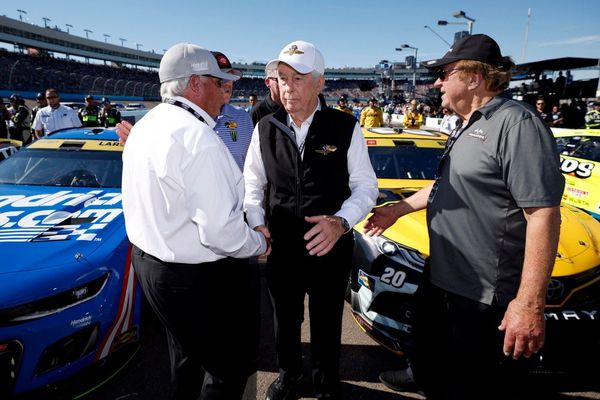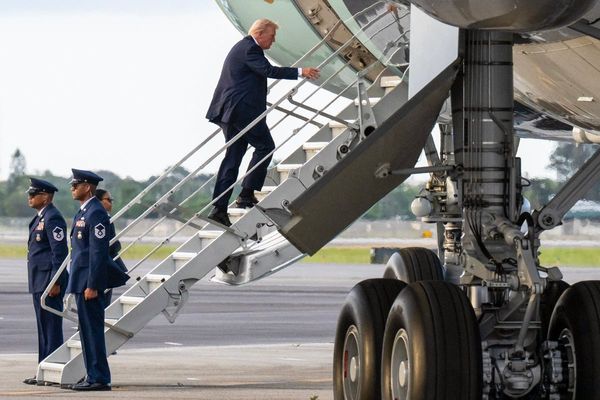
The USA Network took a few shots of two golf fans, or merely adventure enthusiasts, who had taken the high ground atop a cliff separating Royal Portrush from the ocean during second-round action Friday.
They had the best seat in the house for what could prove to be Scottie Scheffler’s deciding charge. A bird’s-eye view of the tournament favorite and leader in the clubhouse ramming in a 34-foot birdie on No. 6, his second of three in a row. He’d follow with four more on the back nine in a theatrical display complete with wardrobe changes forced by the soggy elements.
Scottie Scheffler moves closer to the lead with a 34-foot birdie putt. 📈👀
— Golf Channel (@GolfChannel) July 18, 2025
📺 USA Network | @TheOpen pic.twitter.com/Tc9FqofumT
It was a single editorial choice to cut away to their reaction from a lofty perch. A raised hand outlined by a gray sky with rugged greenery pockmarked by open umbrellas below. Yet sometimes a picture is worth a thousand words. And to the broadcast partner’s credit, they’re succeeding at setting the scene without too many pre-packaged pieces and haughty narration.
They’re not beating us over the head with tales of yore or showing us what the nearby pubs look like. It’s not a travelogue and history book tied together with golf but rather golf intertwining with history. And it works. Because a simple American mind like mine cannot comprehend a place that looks like that. Once a year the British Open provides a free vacation without packing bags. A reason to check out that bucket list again and wonder if maybe, just maybe, you’ll ever book that transatlantic ticket and play those places that have forgotten more stories than you’ll ever have.
When you can feel like you’re actually there, even to get a sense of the place, it becomes extra special. The simplicity of the framing used by the broadcast works on a deeper level than spelling it all out. Their what-you-see-is-what-you-get approach is working and appropriate for links golf. Like the course, they’re not relying on technological tricks or newfangled gimmicks. Here the pacing works because the mind wanders. It’s up to the viewer to observe the subtleties and inject their own creativity.
Perhaps from their spot atop that hill the pair could see other cathedrals of the game, packed into a tight area and largely untouched by time. It is a simple thrill from a lost past to sneak a peek at a sporting event from afar without the burden of buying a ticket. Those loopholes are almost all gone or too corporatized now to retain any magic.
These two found one. That land existed long before golf began. And for hundreds of years whomever had the stamina and audacity to climb it could be treated to the action down below, from world-class player to out-of-their depth duffer. Cameras just happened to find them as the best player in the world was stepping on the accelerator. Sometimes things just line up.
It’s an oversimplification to say that it’s all luck. The climbers did the work to get up there. USA’s production had the imagination to scan the horizon and mind to show it.
This article was originally published on www.si.com as 2025 British Open TV Review: Broadcast Keeps It Simple and It's Working.







